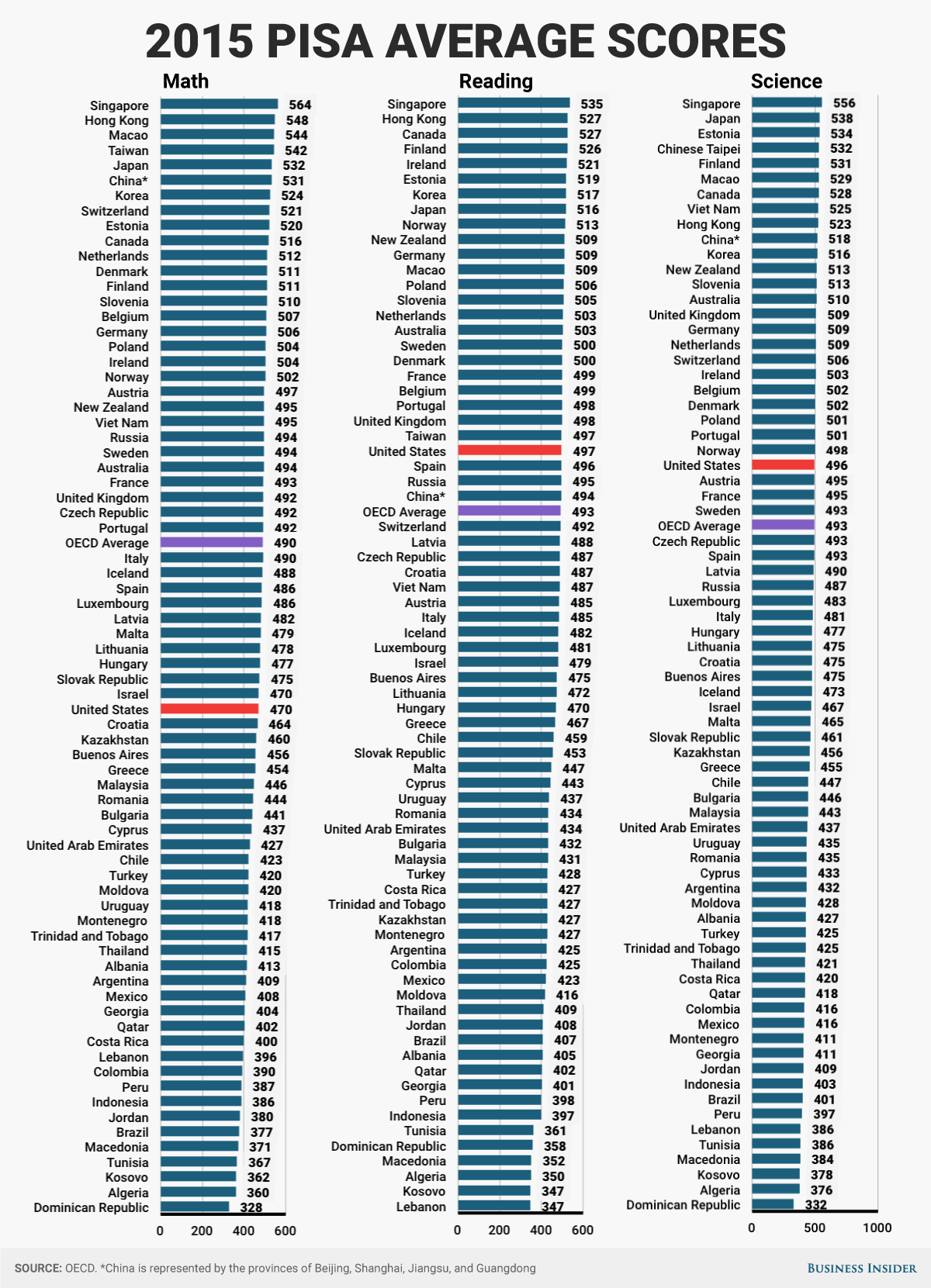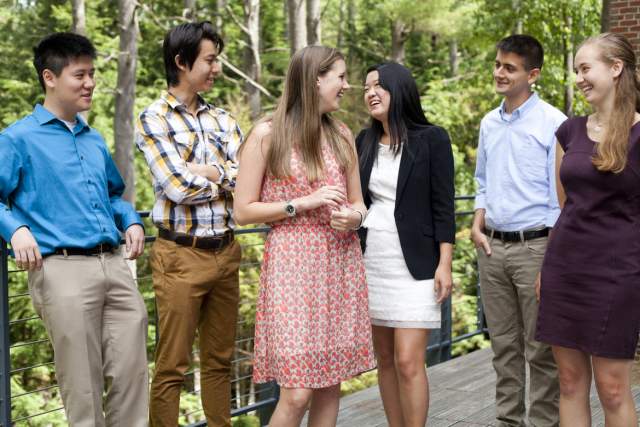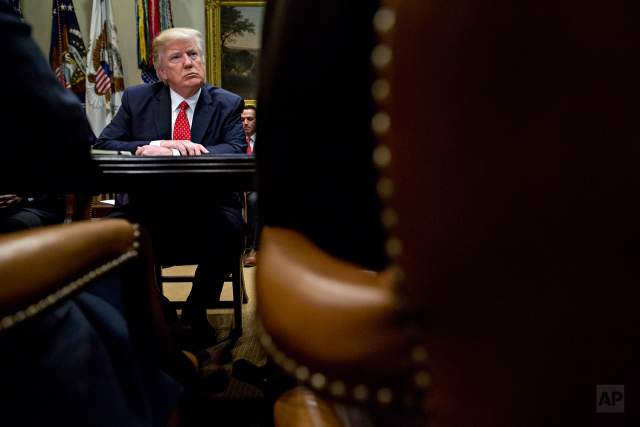Slaughter & Rees Report: The Crisis in America’s Classrooms
"Many jobs of the future exist today, with many of them simply going unfilled because too few Americans have the skills needed to fill them," say Slaughter & Rees as they discuss the 2015 Programme for International Student Assessment results.

"Improving student learning requires many interventions inside America’s classrooms," say economists Slaughter and Rees.
With the U.S. Senate narrowly voting on February 7 to confirm Betsy DeVos as the next Secretary of Education, the focus now can hopefully shift to the fundamental issue at hand: the continued poor performance of too many American students in subjects that are the foundation of success in the global economy.
Need proof that America is not creating enough of the skills its workers need to succeed? Try this passage from a recent New York Times article: “When the German engineering company Siemens Energy opened a gas turbine production plant in Charlotte, N.C., some 10,000 people showed up at a job fair for 800 positions. But fewer than 15 percent of the applicants were able to pass a reading, writing and math screening test geared toward a ninth-grade education.”
Building a better future starts with facing the facts, however sobering. So, brace yourself for the recently released results of the Programme for International Student Assessment. Every three years, PISA measures how well 15-year-old students throughout the world—72 countries in the 2015 wave—“have acquired key knowledge and skills that are essential for full participation in modern societies.” How did American kids do? Decidedly mediocre, as the image at the bottom of this column shows quite convincingly.
In reading literacy, American students scored an average of 497, four points above the average across the 34 other industrialized countries that belong to the Organisation for Economic Co-operation and Development (OECD). Twenty-three countries scored higher than 497: from the top two performers, Singapore (535) and Hong Kong (527), to other large economies like Canada (527) and Korea (517). The story was similar in science. American students scored an average of 496, three points above the OECD average but below 24 other countries, such as Singapore (556), Japan (538), and Germany (509).
America’s performance was worst in math. American students scored an average of just 470, a full 20 points below the OECD average. High performers in math included Singapore (564) and Hong Kong (548) but also Japan (532), Switzerland (521), and Germany (506); 39 countries overall averaged better than the United States. In none of the three categories did America improve relative to 2012: in 2015 the average reading and science scores fell by one point, the average math score by 11 points. One bright PISA spot for America was that 9 percent of students scored as “top performers.” At the same time, however, 20 percent of U.S. students were deemed to be “low performers.”
It is often said that the jobs of the future are going to place a large premium on a high degree of competency in precisely the disciplines measured on the PISA test. This is true—but many of those jobs of the future exist today, with many of them simply going unfilled because too few Americans have the skills needed to fill them. (Some portion of that skills gap accounts for the 5.5 million job openings across the country in December, according to the most recent data from the Bureau of Labor Statistics.)
The underperformance of American students is not a new story. The foreboding “Nation at Risk” report, which intoned that “if an unfriendly foreign power had attempted to impose on America the mediocre educational performance that exists today, we might well have viewed it as an act of war,” was published in 1983. But given how long this story has been playing out, its costs today are now very large. Slow productivity growth, wage stagnation, falling rates of entrepreneurship: all these linked and intractable problems reflect, to varying degrees, too many American students being too unprepared for the modern workforce. And the Siemens anecdote speaks to how these costs can be amplified in a global economy: foreign companies that cannot find the talent they need in America are more likely to find that talent and create those jobs abroad.
We acknowledge that improving student learning requires many interventions—inside America’s classrooms and, ideally, inside America’s homes as well for those children in the most fragile socioeconomic situations. But the PISA data underscore the crisis at hand.


